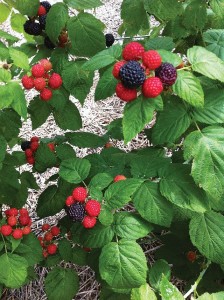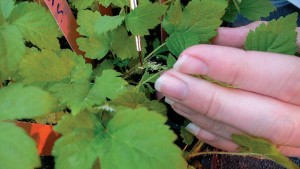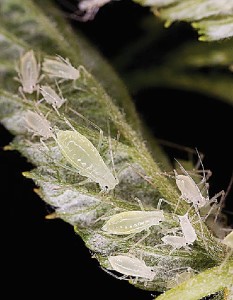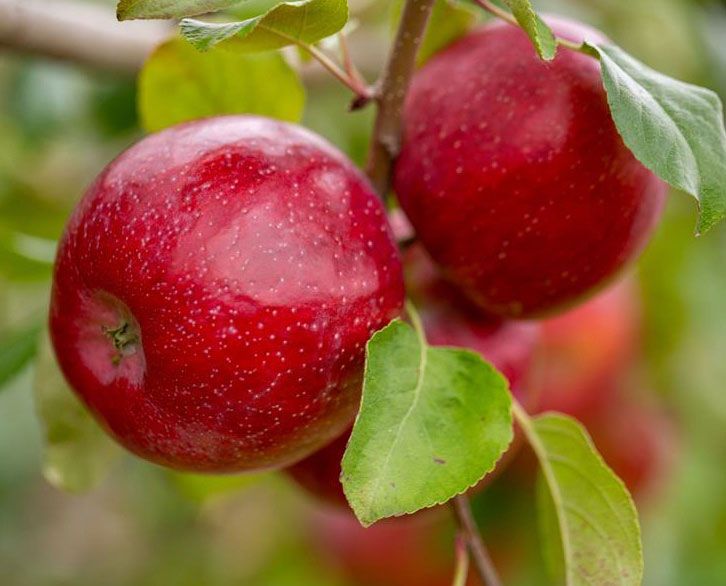Building A Better Black Raspberry

(Photo Credit: Gina Fernandez, NC State)
Black raspberries are a minor crop, even among the berry crops. The majority of the berry-consuming public only knows of them as a processed product, such as jam and juice, and few people have ever had them fresh. However, it has not always been that way.
In the early 1900s, black raspberry production was centered in and around western New York and exceeded the production of red raspberry.
By the 1940s, disease problems shifted production to Oregon, where the crop is now grown and harvested mechanically for processed products.
In the past decade there has been a growing amount of data extolling the health benefits of dark fruits in general, and black raspberries specifically. These discoveries have led to a demand for fresh product and the potential for increased production range.
Despite the potential, there are many challenges for this crop including low yield, poor regional adaptation, and disease and insect susceptibility. In addition, there have been few new cultivars released due to a lack of breeding effort and a lack of genetic diversity in the breeding stock.
Ramping Up Research
In 2011, a group of more than 15 scientists at 11 institutions were awarded a USDA National Institute of Food and Agriculture (NIFA) Specialty Crop Research Initiative (SCRI) grant for $1.59 million titled, “Developing The Genomic Infrastructure For Breeding Improved Black Raspberries.”
At the beginning of this project, two genetically and physically diverse populations of black raspberry plants were propagated and planted in four research stations and six commercial locations representing current, historic, or potential production sites in Oregon, Ohio, New York and North Carolina. Detailed observations for more than 30 fruit and plant traits were taken at each of these sites over three years.
The ambitious project has seven major objectives, including breeding, in-depth genetics, consumer preferences, and educational efforts. Teams of researchers have addressed each of the objectives over the years and they have made significant strides. The scientists report their findings yearly to USDA, funding agencies and grower groups. A comprehensive list of their more technical findings can be found at http://is.gd/BlackRaspberryResearch.

Inoculating seedlings to test for plant resistance or susceptibility. (Photo Credit: Jill Bushakra, USDA-ARS)
Summary Of Findings
■ Detailed profiling of plant genetics — Researchers have sequenced the DNA from different parts of the plant — leaves, roots, and fruit — to find genes that are unique to each part. They will use this information to find what makes each plant and plant part behave differently from one another. This in turn can help identify sources of disease and insect resistance as well desirable horticultural traits such as improved fruit size, plant vigor, phenology (e.g. time of flowering), fruit chemistry (sugar and acid levels), and heat tolerance. For plant breeders, this information will reduce the amount of time needed to determine whether early generation seedlings have specific traits of interest, and will reduce the amount of space needed to grow populations since only those with the traits of interest continue on for observation over additional seasons in the breeding program.

These aphids vector numerous raspberry viruses. (Photo Credit: Stephen Ausmus, USDA-ARS)
■ Aphid resistance — An exciting example of how these discoveries work is that the labs in Oregon and North Carolina have identified regions on the linkage maps — genetic maps of chromosomes — that are associated with aphid resistance. This information will allow breeders to select parents with aphid resistance and develop cultivars that are less susceptible to viruses, thereby increasing the longevity of black raspberry plantings.
■ Heat tolerance — Scientists in North Carolina, the warmest site in this project, have screened the plants in their field site and found there is a wide range of tolerance to heat stress in the individual plants. The data collected were very similar to data collected previously on red raspberry in the same location. They are now further comparing the genetic data between red raspberry and black raspberry to see if the trait for heat tolerance may be found in the same gene region in both species. In the future, they will use these traits for identifying individuals that are better suited for production in regions with hot summers.
■ Usefulness of black raspberry for studying red raspberry and blackberry — One of the goals of this project is to be able to use the information developed in black raspberry to aid in red raspberry and blackberry breeding and research. Because black raspberry has such low genetic variation, anything that is different in black raspberry will be more easily identified in red raspberry and blackberry. This means that in the future, the black raspberry DNA sequence information will also be useful for identifying genes for disease and insect resistance, fruit quality, stress tolerance, and a host of other traits in red raspberry and blackberry as well.
■ Consumer preferences — Ohio State University organized two different blind tasting panels of seedless puree made from the fruit of eight black raspberry breeding selections, which took place in Oregon and Ohio. The untrained consumer panel in Oregon showed definite preferences and dislikes in the puree flavor, aroma, texture and color. A trained sensory panel in Ohio had similar overall results, indicating that preferences are common across the U.S.

Christine Bradish explains her research at a field day at the Sandhills Research Station in Jackson Springs, NC. (Photo Credit: Gina Fernandez, NC State)
■ Training and outreach — Over the past four years, the researchers on this project have given presentations at local field days in each of the four states, at annual meetings of the North American Raspberry and Blackberry Association, Pacific Northwest grower meetings, and international meetings. The researchers have trained many undergraduate and high school students in everything from simple care of plants and identification of visual traits in the field to complex molecular technology in the lab. At the American Society for Horticultural Science meetings in New Orleans this August, researchers working on the project will be presenting a training session in plant breeding for graduate students and others who are interested to learn how to use genetic tools for their breeding programs.
By fully integrating genetics, plant breeding, and an in-depth exploration of consumer perspectives, this research will be immediately useful to breeders engaged in developing tomorrow’s superior black raspberry cultivars that will drive increased production and industry growth. ●









